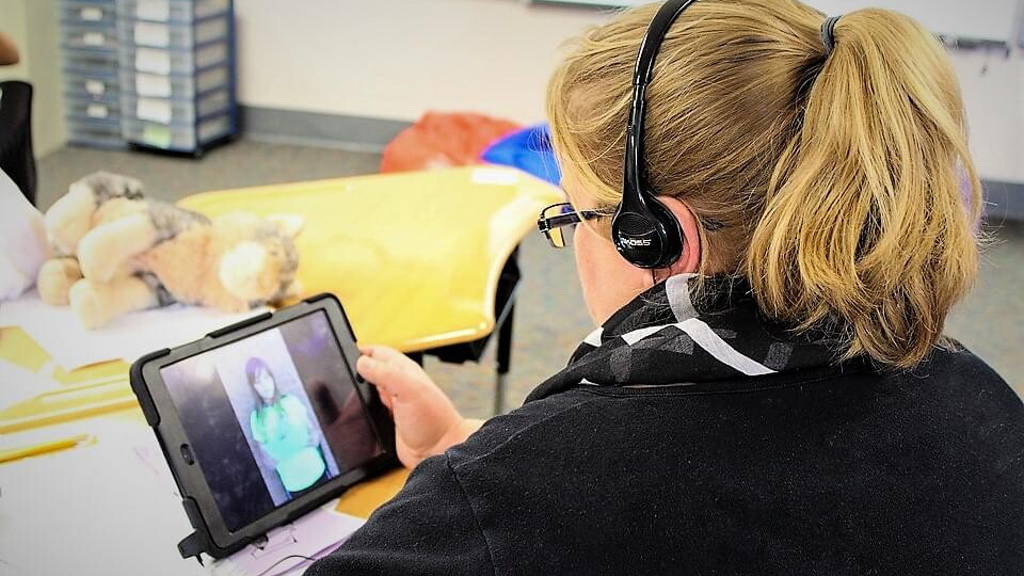The results, published in the May issue of Health Affairs, stem from analysis of telemedicine use among Medicare beneficiaries nationwide over 10 years. The study shows an average 45 percent jump per year in telemedicine visits between 2004 and 2014, among rural patients, with striking variation across states. Four states had no such visits in 2014, while in nine states, there were more than 25 telemedicine visits per 100 patients with serious mental illness.
Telemedicine has been touted as a way to eliminate barriers to treatment for patients who would normally have no access to specialists. In the area of mental health, the researchers say, telemedicine seems particularly promising as a way to close the access gaps by providing remote video conferencing. Compared with other conditions, mental health disorders may be particularly well suited for telemedicine services as patients often do not need a physical exam. All growth aside though, the researchers point out that overall use of telemedicine services across all rural patients with mental health disorders remains extremely low—at 1.5 percent.
Some medical groups, including the Department of Veterans Affairs, have widely implemented telemedicine services, but Medicare has much more stringent criteria on which services can be reimbursed and a requirement that mandates that the patient and clinician must live in the same state.
The investigators underscore the need to balance under-use with over-use and caution that further research is needed to delineate ways to ensure responsible use of telemedicine for mental health. "This work provides us with crucial information as we move forward to understand whether the rapid rise in mental telehealth actually translates into better patient outcomes,” said co-investigator Sherri Rose, associate professor of health care policy at Harvard Medical School.
Growing importance telemedicine
The reasons for the dramatically uneven distribution remain unclear. State laws that regulate the provision and reimbursement of telemedicine services for mental health appear to play a role. “Our results highlight the growing importance of telemedicine in the treatment of mental health disorders in rural settings where access to mental health care is often problematic,” said study lead investigator Ateev Mehrotra, associate professor in the Department of Health Care Policy at Harvard Medical School.Telemedicine has been touted as a way to eliminate barriers to treatment for patients who would normally have no access to specialists. In the area of mental health, the researchers say, telemedicine seems particularly promising as a way to close the access gaps by providing remote video conferencing. Compared with other conditions, mental health disorders may be particularly well suited for telemedicine services as patients often do not need a physical exam. All growth aside though, the researchers point out that overall use of telemedicine services across all rural patients with mental health disorders remains extremely low—at 1.5 percent.
Debate about value expanding telemedicine
There is an ongoing debate in Congress about the value of expanding telemedicine coverage for Medicare beneficiaries. Given that Medicare coverage standards often set the tone for services covered under commercial health plans, expanding access to telemedicine for Medicare patients could translate to expanding coverage for privately insured patients as well.Some medical groups, including the Department of Veterans Affairs, have widely implemented telemedicine services, but Medicare has much more stringent criteria on which services can be reimbursed and a requirement that mandates that the patient and clinician must live in the same state.
Tracking telemedicine visits
In their analysis, the investigators tracked telemedicine visits among Medicare beneficiaries with mental illness over 10 years. The number of telemedicine visits increased from 2,365 in 2004 to 87,120 in 2014. An average of 5 out of 100 rural beneficiaries with a mental health condition had a telemedicine visit, and the number was even higher—12 out of 100—for patients with serious mental illnesses, such as bipolar disorder or schizophrenia. The latter group makes up only 3 percent of rural Medicare beneficiaries, but accounted for more than a third of these telemedicine visits.The investigators underscore the need to balance under-use with over-use and caution that further research is needed to delineate ways to ensure responsible use of telemedicine for mental health. "This work provides us with crucial information as we move forward to understand whether the rapid rise in mental telehealth actually translates into better patient outcomes,” said co-investigator Sherri Rose, associate professor of health care policy at Harvard Medical School.






